#actually albino
Text
i see my disabilities like i see my transgender-ness.
they both have disadvantages.
socially: transphobia, ableism.
in yourself: dysphoria, the disability itself needing you to adapt to do things, or not being able to do some things at all.
both have pros and cons. some people dont want to be trans. some people dont want to be disabled.
yet, i like being both. theyre part of my identity, big ones at that. and thats okay.
#posting cause lately ive worried over if i Should hate my disabilities#so hope this helps someone#physically disabled#disabled#disability#disabilities#physical disability#mental disability#cpunk#cripplepunk#cripple punk#chronic disability#actually disabled#actually autistic#autism#autistic#actually albino#albinism#albino#chronic pain#chronic illness#disabled life
224 notes
·
View notes
Text
What To Know Before Writing an Albino Character
1) General Information:
Albinism is a genetic disorder that results in decreased production of a pigment called melanin in the skin, hair, and eyes, resulting in light color or no color. Albinism is not a disease, nor do people "suffer" from it — though every albino person has their own thoughts and feelings regarding their condition. There's no cure for albinism. People with albinism are more likely to be diagnosed with skin cancer, as well as dealing with things like sun burns, but besides sight problems and eye sensitivity, most people with albinism are just as healthy as everyone else.
People with albinism are typically diagnosed at birth, as doctors can tell by their appearance. If albinism is suspected, a doctor can order a genetic test to get the most accurate results regarding type and gene mutation. Due to eye complications that come with albinism, some doctors will asks for babies to be seen by optometrists. During those eye examinations, doctors can find out if the patient has rapid eye movement, sensitivity to bright light, or misalignment of the eyes. Most people with albinism have photophobia (extreme sensitivity to bright lights), refractive errors (such as astigmatism, myopia, hyperopia), nystagmus (involuntary movement of the eyes, which can lead to abnormal head positioning), or strabismus (misalignment of the eyes).
Due to low or reduced melanin, people with albinism are extremely vulnerable to UV sun damage. To avoid damage from the sun, people with albinism are advised to wear protective clothing, hats, and sunscreen.
Along with that, people with albinism wear glasses that block out UV rays. They also use softer lights in their homes and on their electronic devices. Some albinos experience pain or headaches after being exposed to intense bright colors or eyestrain, which causes them to lean more towards pastels when regarding things they'll have to look at a lot.
People do not always like being referred to as albino, sometimes preferring the term "person/people with albinism." Many don't care, but it's overall regarded as disrespectful and sometimes derogatory to call someone "an albino/albinos" rather than an albino person or the previous listed term.
2) Types of Albinism:
There are two main types of albinism: oculocutaneous albinism (OCA) – the most common type, affecting the skin, hair and eyes, and ocular albinism (OA) – a rarer type that mainly affects the eyes. OCA is the type of albinism that most people are familiar with and that is represented more in the media. People with OA typically look the same as non-albino people, with the exception of their eyes. However, some do have slightly ligher hair and skin colors from their family members, but not by a very big extent. Their visual acuity is typically lower than normal, ranging from 20/60 to 20/400.
OA1 is caused by a change in the GPR143 gene that plays a signaling role that is especially important to pigmentation in the eye. OA1 follows a simpler pattern of inheritance because the gene for OA1 is on the X chromosome. Females have two copies of the X chromosome while males have only one copy (and a Y chromosome that makes them male). To have ocular albinism, a male only needs to inherit one changed copy of the gene for ocular albinism from his carrier mother. Therefore almost all of the people with OA1 are males. While possible if the mother is a carrier of ocular albinism and the father has ocular albinism, it is extremely rare.
As for OCA, there are currently seven forms of oculocutaneous albinism recognized – OCA1, OCA2, OCA3, OCA4, OCA5, OCA6 and OCA7. Some are further divided into subtypes. For OCA, both parents must carry the albinism gene for their child to inherit the condition.
OCA1, or tyrosinase-related albinism, results from a genetic defect in an enzyme called tyrosinase. This enzyme helps the body to change the amino acid, tyrosine, into pigment. (An amino acid is a “building block” of protein.) There are two subtypes of OCA1. In OCA1A, the enzyme is inactive and no melanin is produced, leading to white hair and very light skin. In OCA1B, the enzyme is minimally active and a small amount of melanin is produced, leading to hair that may darken to blond, yellow/orange or even light brown, as well as slightly more pigment in the skin.
OCA2, or P gene albinism, results from a genetic defect in the P protein that helps the tyrosinase enzyme to function. People with OCA2 make a minimal amount of melanin pigment and can have hair color ranging from very light blond to brown.
OCA3 is rarely described and results from a genetic defect in TYRP1, a protein related to tyrosinase. People with OCA3 can have substantial pigment.
OCA4 results from a genetic defect in the SLC45A2 protein that helps the tyrosinase enzyme to function. People with OCA4 make a minimal amount of melanin pigment similar to people with OCA2.
OCA5–7 were recognized in humans in 2012 and 2013. They have reported mutations on three additional causative genes. As gene testing becomes available, and more people with these types of albinism are identified, the complete range of physical manifestations will be recognized, and may overlap with other known types of OCA. Currently, these types of albinism are considered to be uncommon.
Albinism occurs in all race and ethnic groups across the world, but there are some types that are more common amongst certain groups. The most common types of albinism found in the black population of Southern Africa are OCA2 and OCA3. OCA3 is also the most common type found amongst Asian populations. It's important to do research on people with albinism who are the same ethnic/racial group as your character(s) to make sure you are representing them correctly as albinism looks different for each group of people.
As a side note, it's important to know that people with albinism do not always have red eyes. Even those who appear to have red eyes don't actually have that eye color, but it's rather a result of the lack of pigment, which makes the iris paler and thus, the retina more visible. People with albinism can have pretty much any eye color as long as it's a light shade; I've personally met other albino people who've had blue, red, pink, green, purple, and even yellow. In pictures, however, they eyes typically always appear some shade of red.
3) Recognize How People With Albinism Are Treated:
In places like China, having albinism is considered bad luck and many who have it are ostracized and excluded from mainstream society. They're also considered unattractive and inferior to many. Besides their physical disabilities, many Chinese people with albinism say that finding a partner is their biggest struggle.
Africa is one of the most dangerous places for albino people. In West Africa, some communities and families consider it a misfortune to give birth to Albinos and hence, attempts are made to either kill them at birth or banish them from the community. They are constantly abused and ridiculed by the public with derogatory names and social tags that serve as a form of stigmatization.
In many countries of sub-Saharan Africa, people with albinism suffer discrimination and ostracism and are seen as a curse. Many superstitions look at people with albinism as a source of income, so they are mutilated and the parts of their bodies are used in rituals of black magic, under the belief that they give wealth and fortune to those who own them. Some cultures believe that they do not die, but disappear, or that having sex with a person with albinism cures AIDS — which causes a high rate of sexual assault amongst those with albinism.
Not all places view albinism as bad though. In Panama, many people view those with albinism as lucky. In America, many people don't may much mind to those with albinism besides staring and making comments.
Overall, it's worthy to note how people with albinism are treated in the country your character(s) live in. Albinism dictates a lot in people's lives, but for some it can be the cause of their death or severe injury and trauma. People with albinism don't want extensive descriptions of their own trauma, but it's important to not gloss over how they're treated. If your character is from a fantasy setting then you can attempt to reflect how they're treated by looking at countries in the real world most similar to your fictional one.
4) Things To Avoid:
In Hollywood, people with albinism are often depicted as evil. It's become very rare that someone with this condition is viewed positively, they're always either a villain or a comedic relief character whose condition is used to mock them. Avoid both of these as much as you can. If you'd like to make your character with albinism a villain, make them compelling and give them a justifiably reason for their path: don't just make them someone whose naturally evil. If they're comedic relief, don't make them being albino apart of their jokes — give them a personality and make them likable.
Don't make them albino just because you think it's cool. Almost every person with albinism identifies as disabled and it's important to showcase their struggles, specifically with their sight and how they interact with situations that involve bright lights and such. Make sure you're not making them into a pity show, though, as disabled characters shouldn't solely revolve around their disabity. A good example of a character whose disability is a main part of her character but not the only part of it is Toph Beifong from Avatar: The Last Airbender, who is blind like many albino people. That's not to say that people with disabilities are or should be defined by their struggles, but that those struggles are real and often difficult to navigate. They are part of us and help to make us who we are. It might just be my opinion, but if you can ignore all their hardships then that's not an authentic portrayal of anything, really.
People with albinism are also very likely to be bullied for their appearance and viewed as unattractive, so it can be very positive representation to show your albino character as attractive. They don't have to be the most beautiful person in the cast, nor should you fetishize them for being disabled, but it can be nice to show other characters having feelings for them or giving them a romantic partner.
And most importantly, don't make them albino for no reason. Why does your character have albinism? What character or narrative purpose does it serve? How would the story be different if they didn't have albinism? Ask yourself these questions, and if you can't come up with good answers then maybe your character shouldn't have albinism. Think about how being albino affects them, the people around them, their story, and the overall plot. Are you making them albino for the sake of seeming diverse and woke or because you want to represent this group of people?
If your story is leaning into fantasy then you can come up with very easy explanations for why your character is albino. Maybe their people live underground and evolving to have albinism was what as best for their survival. Maybe your character is a clone, in which case they don't need their parents to have the albinism gene.
5) Closing Notes
This is just a general overview for people to get started on writing their albino characters. It's important to talk with actual albino people as you continue writing. Please do your own research on people with albinism to get more detailed insight on the condition.
If you're making a professional piece of work then you consider hiring an albino sensitivity reader to help ensure your depictions are appropriate. If there's anything you're unsure of in the meantime, researching or asking an albino person is best.
#if anyone with albinism has anything to add feel free!!#writing advice#albino characters#albinism#actually albino#albino representation#writing tips#oh and im albino just in case it wasn't clear#aloeverants
336 notes
·
View notes
Text

minish vaati. u agree
#id in alt#minish cap#tloz#vaati#art#little rodent...#also im assuming ?? that vaati is albino so thats why the tail doesnt have the minish typical colouring#idk if its a tail in game actually#bc the town minish dont seem to have them ??#so maybe its some sort of belt thing#whatevarr#EDIT a couple of people mentioned that the tails are decorative and i think thats very cool ty for the info :]
864 notes
·
View notes
Text
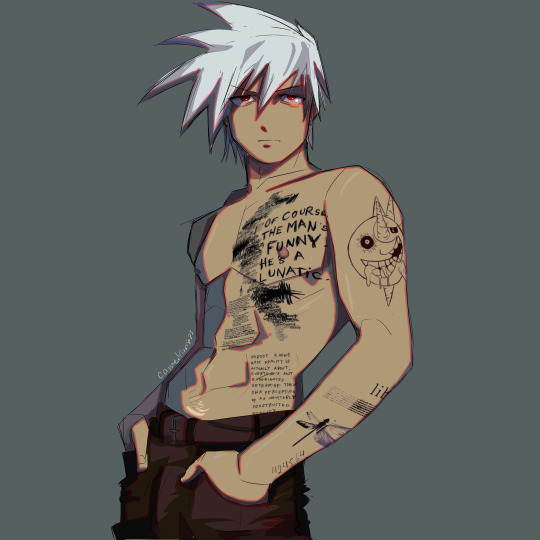
"See something you like babie?"
*ugly screamjng*
#soul eater#soul evans#soul eater fanart#maka albarn#soul eater evans#death the kid#tatoostyle#ddma#albino#ummm since when did he get so uhhhhh#y'all he has been my childhood crush since 5 grade#i actually needed therapy because i didn't belive that he was a fictional character
377 notes
·
View notes
Text
Albino trying to mug you? Use this self defense tactic! It really works!
( based off that one tweet )
#venture bros#the venture bros#pete white#do you think this would actually work#guys albino muggings are on the rise#use this flashlight with the power of the sun
116 notes
·
View notes
Text

We were talking in stream about all the Edgar Allan Poe stories that could make for cool Monster High doll designs... And I got Inspired~
Her name is Stella Tayle-Hart! She's a sleepwalking narcoleptic ghost who always sleeps with one eye open. Her dress is inspired by victorian nightgowns and is covered in beaded blood embroidery, and her heart glows and pulses beneath her floorboard inspired corset uwu
#solilakoi draws#my art#artists on tumblr#monster high#my ocs#monster high oc#edgar allan poe#the telltale heart#telltale heart#this is a concept sketch btw! im working on a full illustration in my streams at twitch.tv/solilakoi ;3c#the actual telltale heart story doesnt involve MUCH blood TECHNICALLY#but that dead body was cut up to be put under the floorboards so. implicitly very bloody#also in case the design notes are hard to read:#shed have a skelita torso and spectra limbs but with the transparent parts being red#the corset would open at the front to reveal the ribcage and glowing heart below#a switch at the back of her neck toggles the glowing#she's albino and has a lazy eye#i think her eyesight might also be Not Great#she talks really cryptically when shes asleep but when awake shes laidback and chill#and thats the only way to know if she's actually awake or not#I have more thoughts but these tags are long enough fdjklas
39 notes
·
View notes
Note
Is Pangur a balinese cat? I was watching Cats 101 last night and she looks a lot like that breed.
sort of!
the Oriental cat family is confusing, because the different 'breeds' are actually just different colours and fur lengths, with interbreeding usually allowed between them (depending on the cat registry)
so half of Pangur's family tree is Balinese (longhaired, blue/lilac/chocolate/seal pointed colouration) and the other half is Oriental Longhair (longhaired, non-pointed). because Pangur isn't pointed, she's considered an Oriental Longhair.
#she's actually albino which is a disallowed colour in all registeries#it's considered a health problem and undesirable. Pangur was a bit of an accident!
937 notes
·
View notes
Text

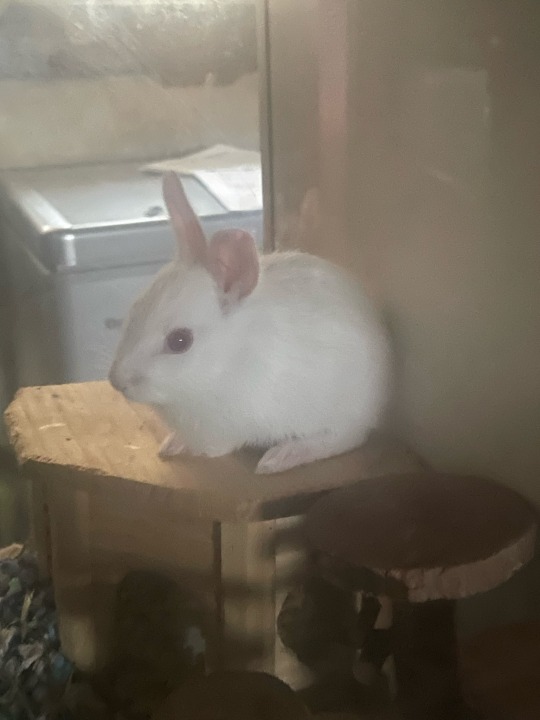
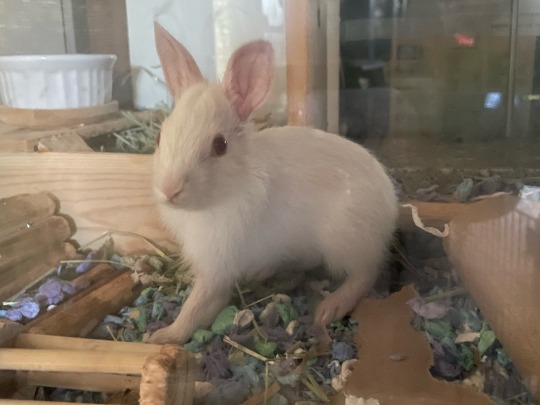
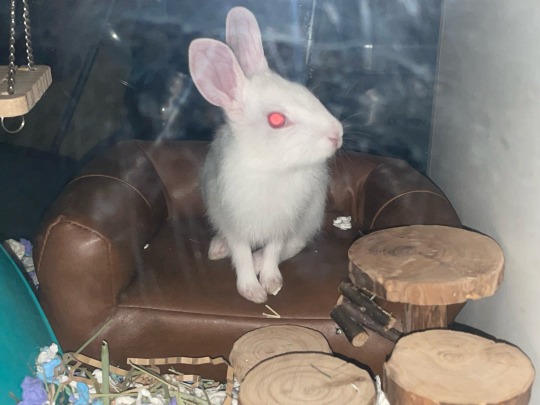
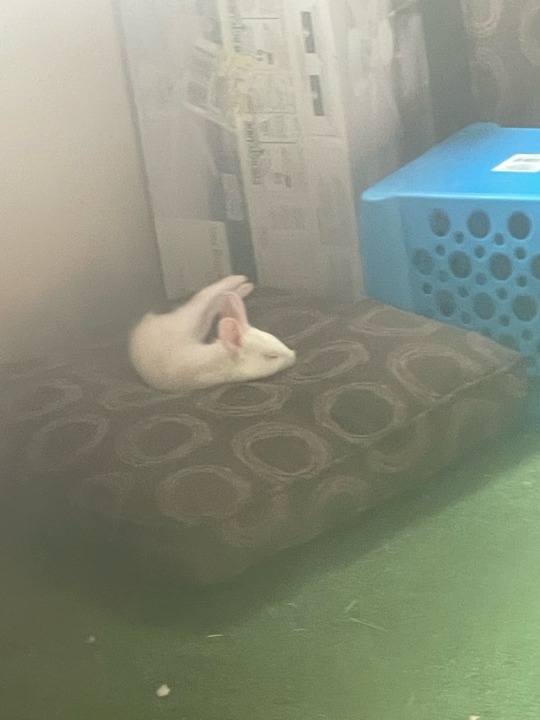
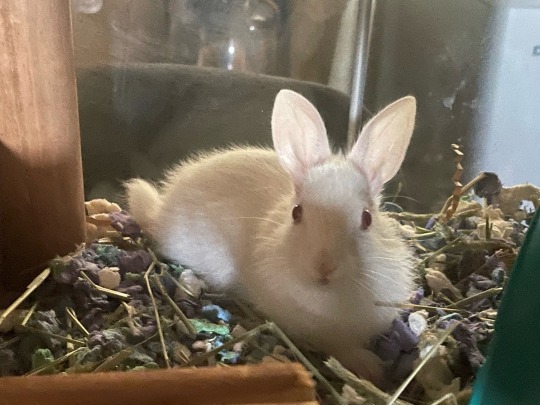
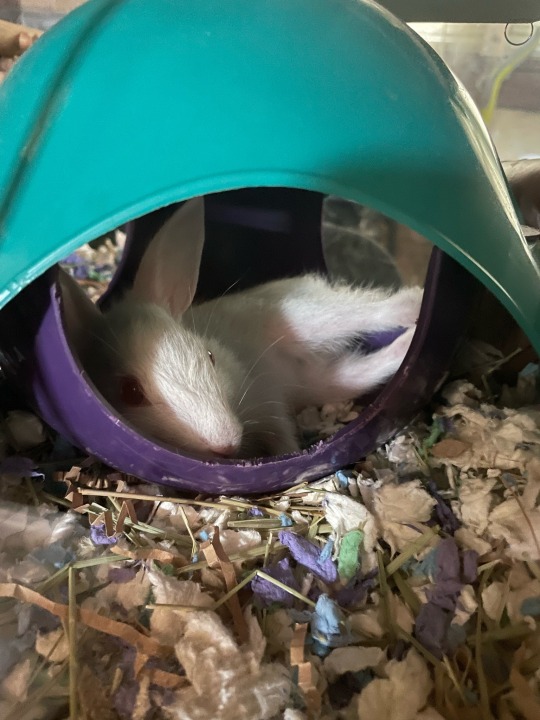

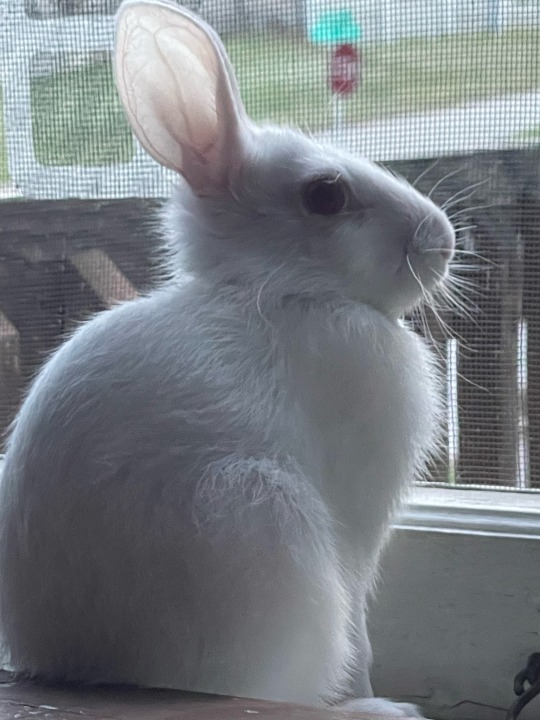
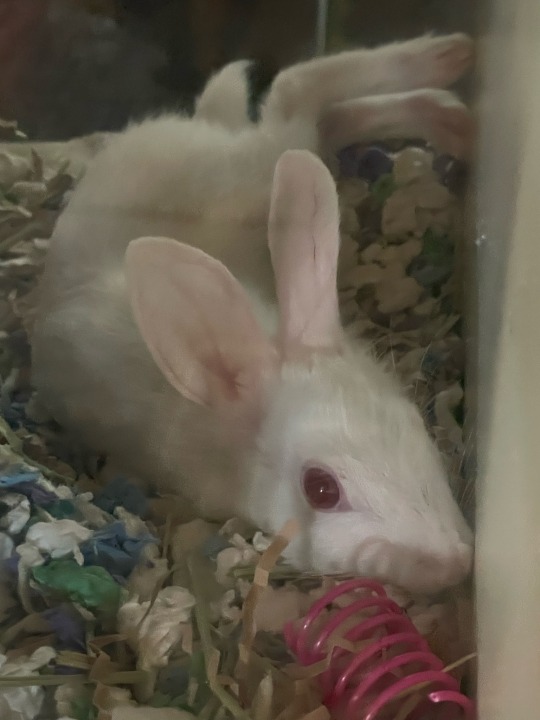
Here are some pics of my 3 1/2 month old baby bunny Snowball! 🐇 🥰
#personal#animals#rabbits#bunnies#found him outside & the DNR said if I wanted to catch & keep it they wouldn't care since he would not survive out in the wild being albino#I just call him a him I don't actually know lol#caught him when he was 7 or 8 weeks (estimated based on stuff I googled)
84 notes
·
View notes
Text

i cant stop thinking about dis post
#a doodley#wishing id kept original concept of skunker being a Plush so this cld work but idk. still does.#and its not actual lore but i can imagine him saying dis. albino smunk that became pink in wash#bc smunker did go from pink brown to pink pink as i improved with furry art#what there IS an actual lore reason for is al asking#in furryverse smunker lives in an area where vibrant color furs arent common#al himself is from a family of all natural colored furs#he wouldnt outright ask bc thats a weird question as it would be in human world but he would mentally be#like woag. pink.#(smunker isnt albino btw he's just apricot color variation)
354 notes
·
View notes
Text
im autistic and have albinism / am albino ❌
assigned AA battery at birth ✔️
#ive had a realization#yeah for those who dont know i have albinism!#you may reblog even if doesnt apply to you btw!#disabled#disability#albino#albinism#autism#autistic#neurodevelopmental#neurodivergent#actually autistic#actually neurodivergent#genetic condition#skin condition#actually albino
115 notes
·
View notes
Text
I recently made a post about how to write character with albinism here, but I wanted to make a post dedicated to different way people can portray Hunter's albinism since the show never really got around to it.
First things first, although Hunter canonically has albinism, it's never specified which type. However, based off his appearance, it's safe to assume he's modeled after those who have either OCA1A or OCA3. This means he has little to no pigmentation in his skin, hair, and eyes — resulting in pale skin, white to platinum blond hair, and magenta eyes. Hunter's eyebrows should also be the same color as his hair as the color does not change for those with albinism as it does for those without it, which the show failed to represent. Please keep this detail in mind if you ever plan on drawing him or decscribing him and you'd like to make sure his appearance is accurate.
It's also important to note that no matter what race or ethnicity you headcanon him as, he should always have these traits as albinism affects people of color as well. Whether you view him as white, Asian, Latino, or Black, his skin color and overall color pallet should remain the same. If you're worried about being unable to properly portray his race or ethnicity without making him darker skinned, I'd recommend looking up people with albinism who are apart of the ethnic group you imagine him as so you can get an example of their features and model him after them.
People with albinism struggle with their sight. Some have minimum blindness whereas others can hardly see at all. I'd recommend making Hunter near-sighted with photophobia, meaning he can only see things that are in close proximity to him with things that far away appearing as an overwhelming bright light (not blurry like those without photophobia). He should also be vulnerable to bright light and the sun. You can show these in an easy way by having him have some type of built in UV ray shades in his Golden Guard mask (and later just by giving him UV ray sunglasses) and by making him fight in close combat with his opponents. For a more silly approach, you can also make him run into or trip on things he doesn't see. It can also be something for him to bond over with Willow.
His skin would also be more vulnerable to the sun, making him more likely to be sunburnt. You can show this very easily as well by having him dress mostly in protective clothing that covers most of his body (like his Golden Guard uniform), or by showing him applying a lot of sunscreen if he plans on dressing differently and going out. You can also show this in a comedic way by having him get badly sunburnt and learning his lesson to use sun protectant from then on.
Hunter is albino as a side effect of him being a clone/grimmwalker, so it makes sense that he may have some negative feelings about his appearance, but make sure your not portraying his albinism as the sole reason for his resentment — he should be upset that he's albino because he's a clone of Caleb, not just because he's albino. Although if you do want to show him feeling upset about the side effects of his albinism (such as his poor sight) than that's understandable, but please make sure you're doing it in a reasonable way.
Overall, there's a lot of ways you can showcase Hunter having albinism that can be fun, sad, and interesting without changing his entire character. One of The Owl House's main takeaways is that representation matters and that also applies to us people with albinism.
#feel free to ask any questions but if ur rude im gonna block you#the owl house#hunter noceda#actually albino#albino hunter toh#toh headcanons#toh headcanon#kind of#aloeverants
40 notes
·
View notes
Photo

Sometimes your world changes overnight
Sometimes the ones you love betray you
Sometimes you find yourself all alone
rumi time
#harumi jade#ninjago harumi#harumi ninjago#princess harumi#jade princess harumi#the quiet one#ninjago#lego ninjago#ninjago fanart#ninjago art#fanart#my art#woah long time no ninjago art#every1 was mad at me on instagram for posting my hero#which i mean fair enough but come on guys. fine have some ninjago art -throws this to you-#lets ignore how i started this back in like. november or something so theres wildly different renderings throughout the piece#oh also idk if ive ever actually mentioned it b4 or not but i hc harumi has albino which is why shes so pale
333 notes
·
View notes
Text

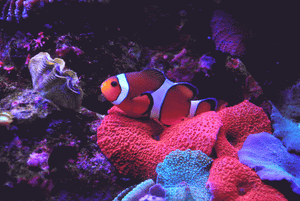


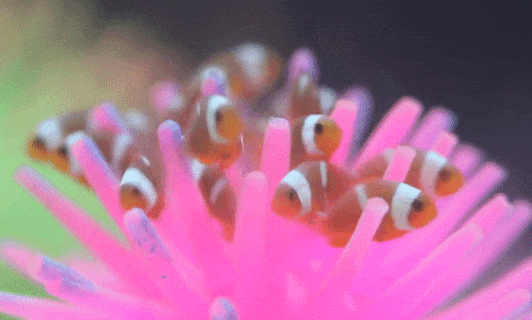


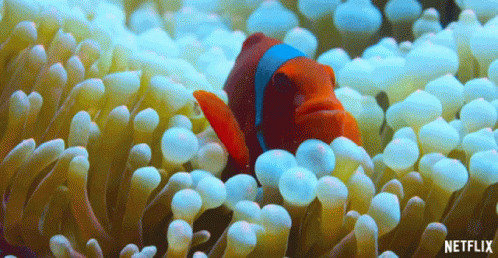
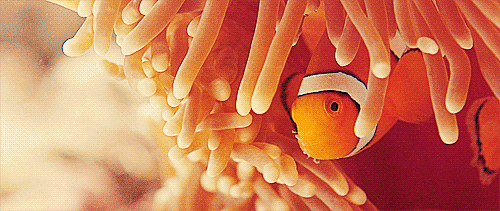

#clownfish#common clownfish#false percula clownfish#mocha clownfish#ocellaris clownfish#picasso clownfish#reef tank#snowflake clownfish#tomato clownfish#albino clownfish#level 2 autism#level 2 autistic#autistic#actually autistic#autism#stim board#fishblr#marine fish#saltwater fish
110 notes
·
View notes
Text
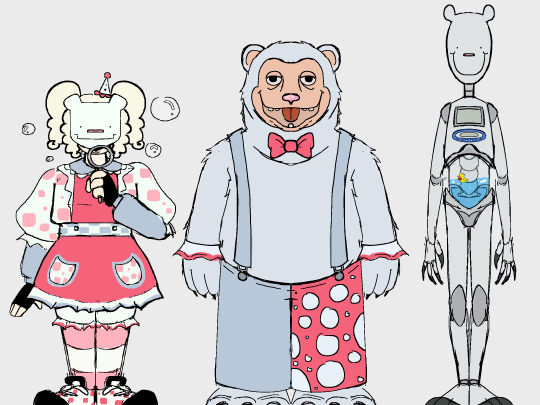
made a bunch of new cucurucho designs because i just love interpreting this guy!!
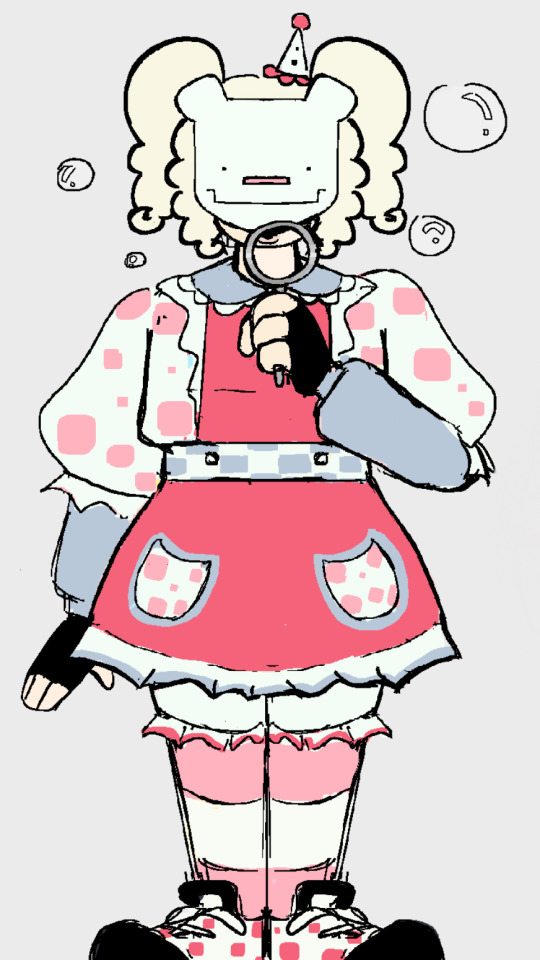
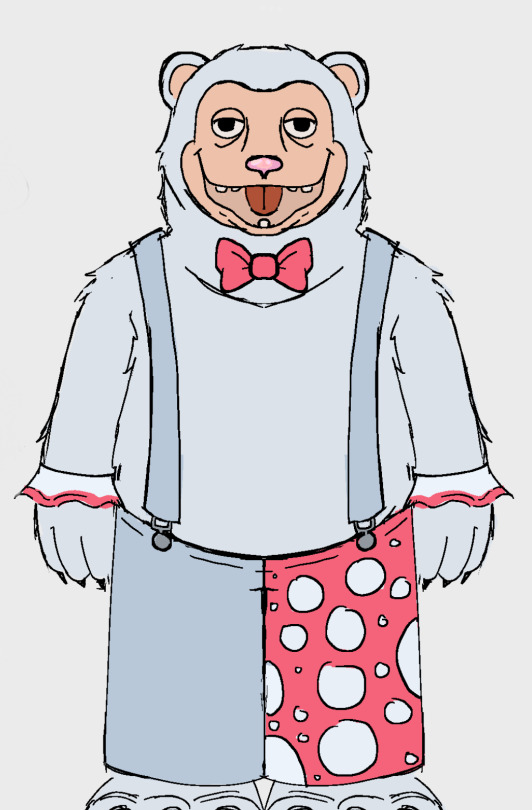

also lady cucurucho with our his mask ^_^

#qsmp#qsmp fanart#zero art#qsmp cucurucho#qsmp osito bimbo#qsmp census bureau#lady cucurucho uses all pronouns like the rest i just use he the most btw!!#i also hope people can tell i tried to make him an albino black person#cucurucho#i haven’t used the singular cucurucho tag ever actually
113 notes
·
View notes
Text
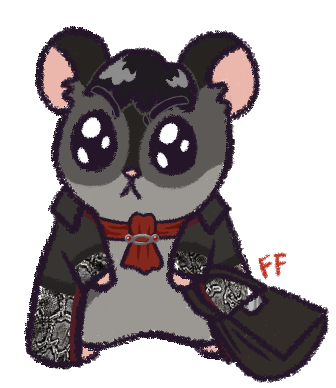
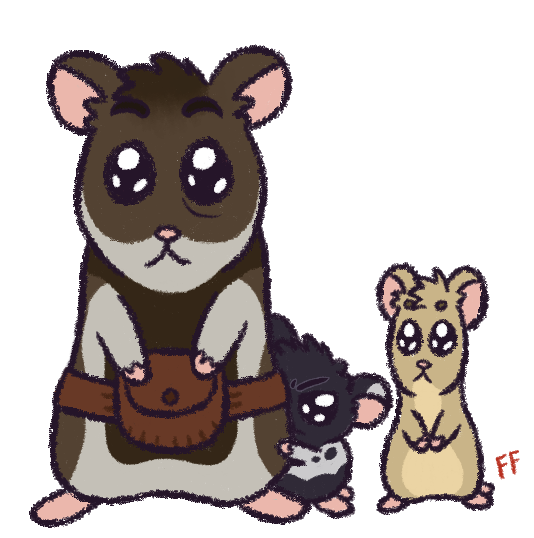


ham-ham healers
#pathologic#hamtaro#man whats. a fun art tag#my wizardry#too tired 2 be clever#anyways i love obscure n weird pathologic crossovers#artemys coat is based on wild hamster fur patterns and daniil is that plus a lil dwarf hamster#cause i like those ash coat ones and god bless em but theyre all lil assholes#clara is obv a cream coat albino. murky and sticky are just domestic coats i though suited#never will i ever fucking actually render the snakeskin on daniils coat. fuck that shit#these were manipulated cuts from the reference i use (png of his classic model)#also drawing him using the microscope was weridly hard
101 notes
·
View notes
Text

Kevin created an Unsanitary Condition in his cage so I brought him out while I did a deep clean.
At first he didn't want to be held and insisted on wrapping around his emotional support grape wood branch, but eventually he calmed down and let me handle him directly. He was even brave enough to sniff around a tiny bit while we were outside. Then when we were just about done cleaning his cage he got nervous about a very suspicious handful of aspen mulch and his courage evaporated. He went and camped out in his hide.
Poor Kevin.
#he's actually my best rat snake too#at least he doesn't musk and bite first and ask questions later#side-eyeing Dilbert#rat snake#rat snakes#everglades rat snake#albino patternless everglades rat snake#i love you Kevin#snake#snakes#reptile#reptiles#reptiblr#Kevin
139 notes
·
View notes